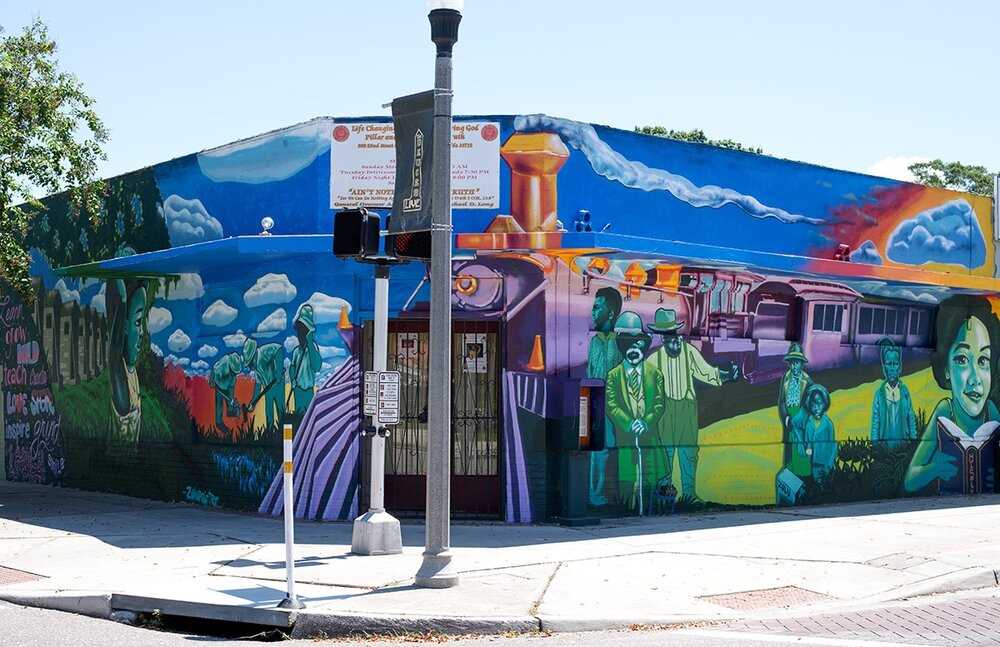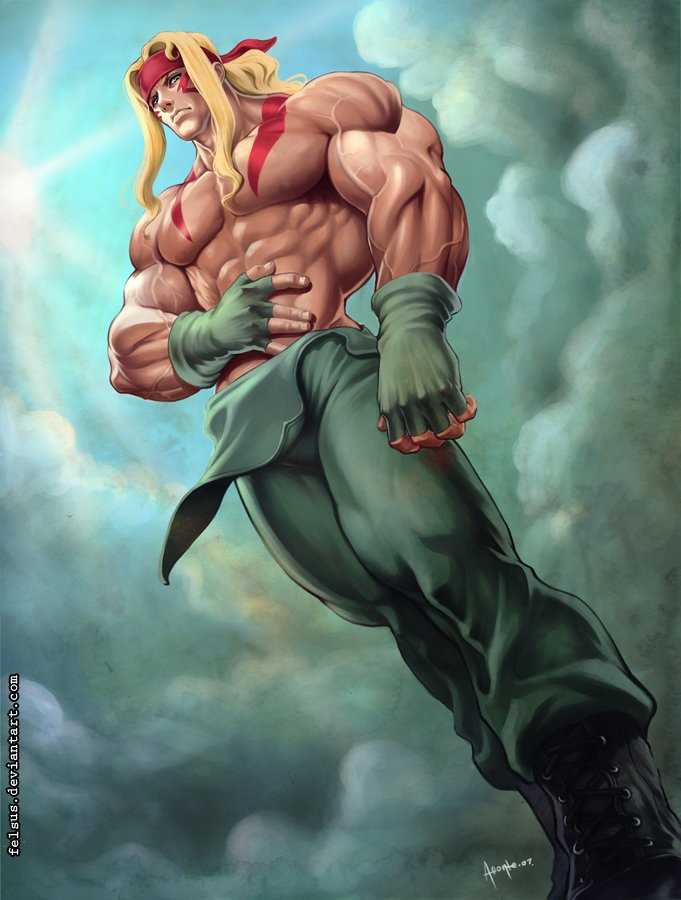Urban art is a vibrant and dynamic form of artistic expression that captures the true essence of the city. It takes various forms, such as street art, graffiti, murals, and installations, to transform the urban landscape into an open-air gallery. Urban artists use their creativity and talent to capture the energy, diversity, and spirit of the city, making each piece a unique reflection of its surroundings.
The streets become the canvas for these artists, who use their work to challenge societal norms, spark conversations, and generate a sense of community engagement. Their art has the power to transform neglected or forgotten spaces into visually captivating and thought-provoking masterpieces, breathing new life into the urban environment.
One of the most captivating aspects of urban art is its accessibility. Unlike traditional art forms that are confined within the walls of galleries and museums, urban art is for everyone to see and appreciate. It defies the boundaries of elitism, bringing art to the masses and blurring the line between the artist and the audience. Urban art creates a democratic space for dialogue and self-expression, and it encourages individuals to engage with their surroundings in a meaningful and creative way.
Urban art is not only a visual spectacle but also a testament to the resilience and spirit of urban communities. It often reflects the social, cultural, and political issues that shape our cities, serving as a powerful tool for activism and social change. Through their art, urban artists give voice to the marginalized and shine a light on the hidden stories that lay beneath the surface of the city.
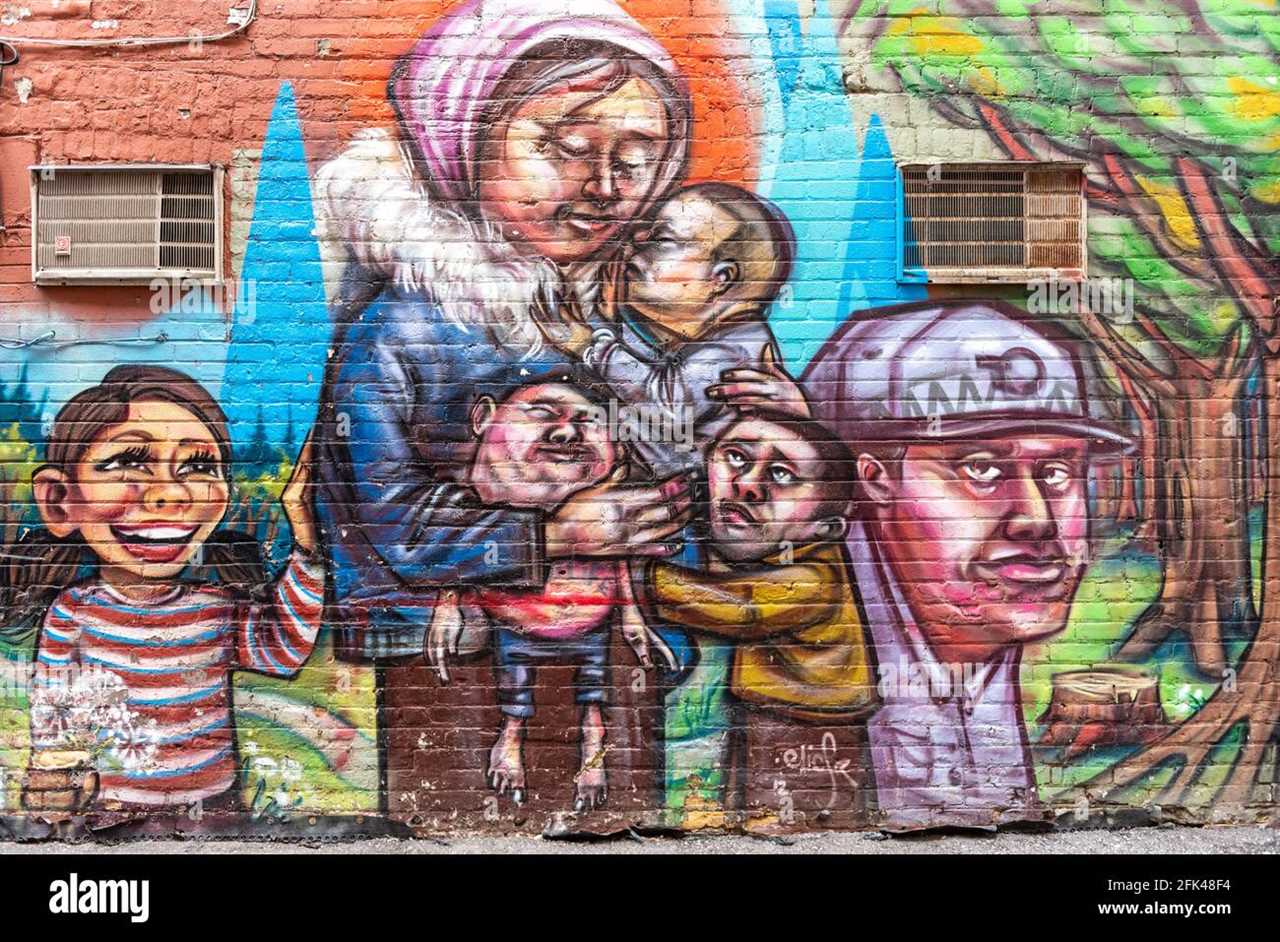
Murals have become a popular form of art in cities around the world, transforming once bland and monotonous walls into vibrant and captivating pieces of art. These large-scale paintings not only bring color and life to the streets, but they also serve as a medium for creative expression and a reflection of the city’s culture and identity.
One of the primary reasons why murals have gained popularity is their ability to transform public spaces and create a sense of community. By adding beauty and color to once plain walls, murals have the power to uplift the atmosphere of a street or neighborhood, making it more inviting and vibrant. They can also serve as landmarks, giving a sense of identity and place to a particular area.
Furthermore, murals often reflect the history, culture, and values of a city or neighborhood. Local artists often incorporate themes that are relevant to the community, celebrating its diversity and heritage. Whether it’s a mural depicting iconic figures or events, or a piece that addresses social or environmental issues, murals can spark conversations and create a sense of pride among residents.
Another fascinating aspect of murals is their ability to engage and inspire the public. Unlike art confined to museums and galleries, murals are accessible to everyone. They offer a unique opportunity for artists to communicate directly with the public, and for viewers to engage with the artwork on a personal level. Murals can evoke emotions, challenge perceptions, and even inspire action.
Overall, murals have become an integral part of urban art, revitalizing cities and neighborhoods with their vibrant colors and stunning designs. They have the power to bring life to the streets and create a sense of community and identity. Not only do they beautify public spaces, but they also serve as a platform for creative expression and a reflection of a city’s culture and values.
Stencils: Precision and Detail in Street Art

One of the techniques used in urban art is stenciling. Stencils offer a level of precision and detail not often seen in other forms of street art.
Stencils involve creating a template with a design or image and then using it to paint the image onto a surface. The template can be made from various materials, such as cardboard, plastic, or even metal. Artists carefully cut out the desired design from the template, creating a stencil.
Using a stencil allows artists to repeatedly recreate the same design with consistent precision. This is especially useful for complex or intricate images that would be difficult to freehand on a large scale.
Benefits of Stenciling in Street Art
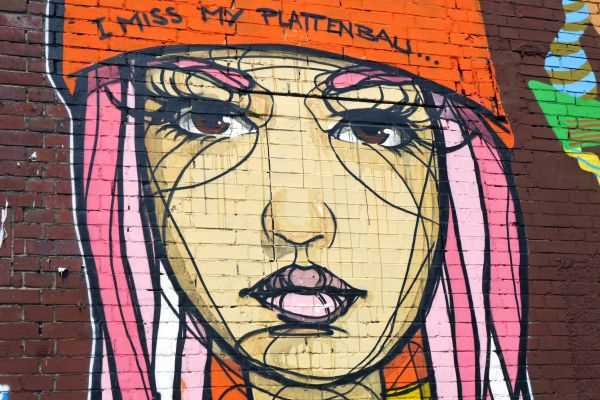
- Precision: Stencils provide artists with precise control over the placement and shape of their designs.
- Repeatability: Once a stencil is created, an artist can use it multiple times, allowing for consistent reproduction of their artwork.
- Detail: Stencils enable artists to create intricate designs and fine details that would be challenging to achieve with other techniques.
- Time Efficiency: Stenciling can be a time-saving technique as it allows artists to quickly apply their designs without the need for extensive sketching or improvisation.
Examples of Stencil Street Art
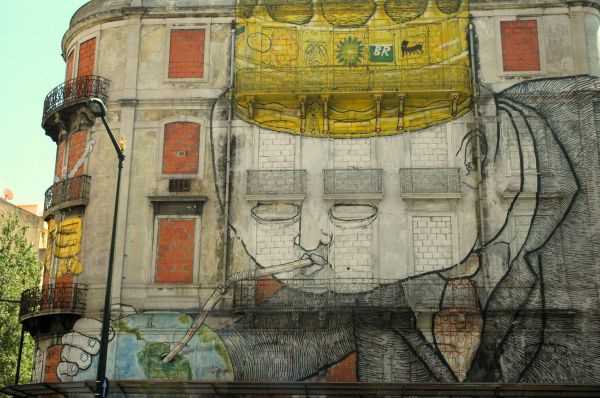
Stencil street art can be found in cities around the world. Some artists use stencils to create political statements or thought-provoking images, while others focus on more aesthetically pleasing designs.
Other artists, such as C215 and Blek le Rat, have also made significant contributions to the stencil street art scene. Their works showcase the versatility and creativity that can be achieved with stencils.
Overall, stenciling is a precise and detailed technique that adds a unique element to the world of street art. It allows artists to create intricate designs and reproduce them consistently, making it a valuable tool for urban art creators.
Graffiti: The Subversive Art of Vandalism
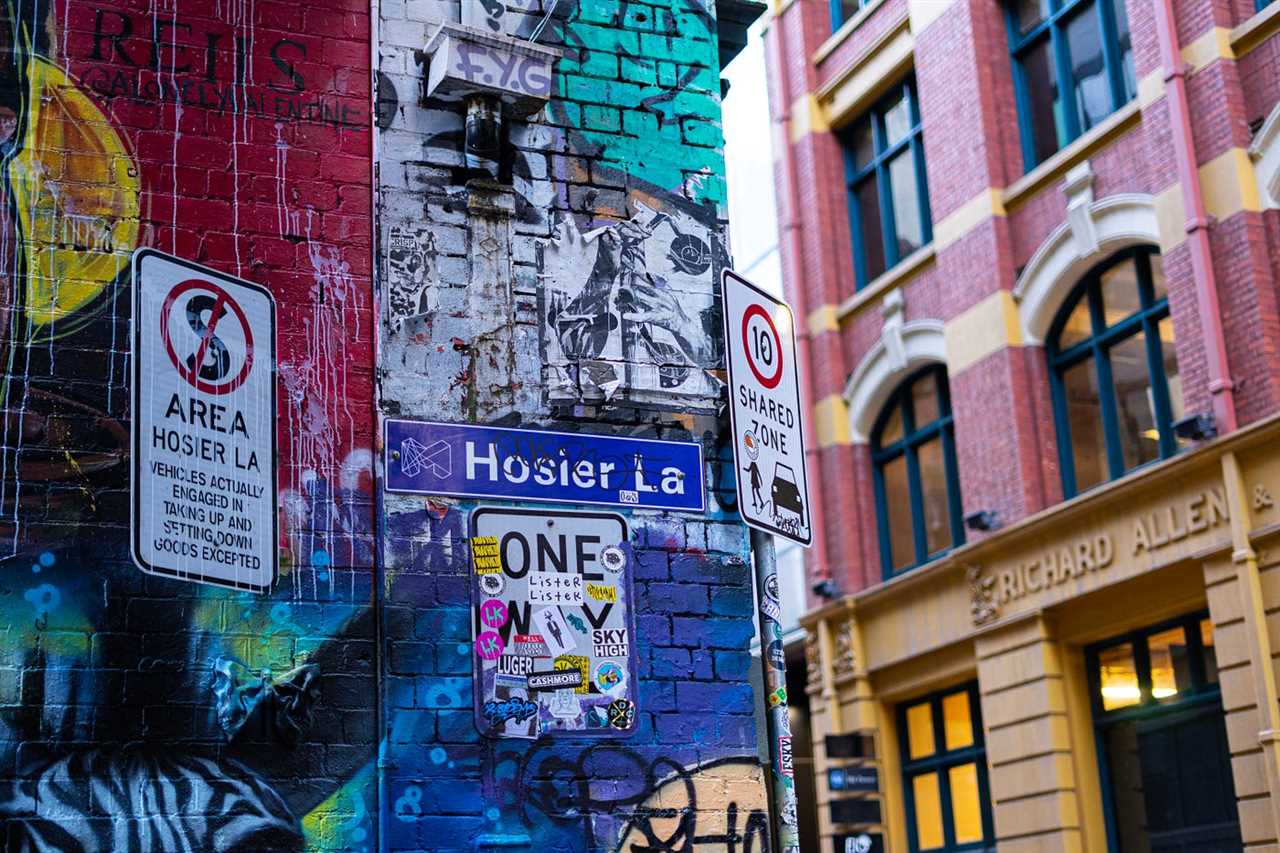
Graffiti can be seen as a rebellious expression, a way for artists to take back public spaces and challenge the norms of society. It provides a platform for those who feel marginalized or voiceless to make a statement and be heard.
What sets graffiti apart from other art forms is its ephemeral nature. Unlike a painting on canvas that can be preserved for years, graffiti is temporary and can be easily painted over or removed. This transience adds an element of excitement and urgency to the art form, as artists race against time to create their masterpieces before they are gone.
The artistic techniques used in graffiti are diverse and ever-evolving. From traditional spray paint to stencils and stickers, graffiti artists continually push the boundaries of what is possible. The styles can range from simple tags and throw-ups to elaborate and intricate murals that cover entire buildings.
Not only does graffiti provide a creative outlet for artists, but it also contributes to the urban landscape by adding color, vibrancy, and visual interest to the city. It has the power to transform ordinary spaces into visually stimulating environments, sparking conversations and creating a sense of community.
However, it is important to acknowledge that there is a fine line between graffiti as art and graffiti as vandalism. When graffiti is done without permission or on private property, it can be seen as an act of destruction rather than creativity. Respect for public spaces and the rights of property owners is crucial in maintaining a healthy balance between artistic expression and social responsibility.
Street Art: Pushing Boundaries and Challenging Norms
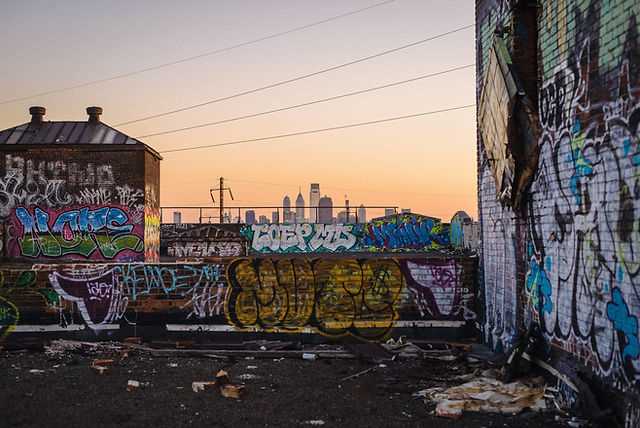
One of the ways in which street art pushes boundaries is through its unconventional canvas. Instead of painting on a canvas or a piece of paper, street artists use city walls, buildings, and other urban surfaces as their medium. By taking their art to the streets, these artists are able to engage with the urban environment in a way that traditional artists cannot. They transform abandoned and neglected spaces into vibrant and thought-provoking works of art, adding color and life to the concrete jungle.
Another way in which street art challenges norms is through its often controversial and provocative content. Street artists use their art to express their opinions, challenge authority, and provoke reactions. They address a wide range of social and political issues, such as inequality, racism, war, and environmental degradation. By bringing these issues to the forefront and making them visible in public spaces, street art encourages dialogue and raises awareness among the general public.
Furthermore, street art challenges the notion of who can create and appreciate art. It breaks down the barriers of traditional artistic spaces and brings art to the streets, where it can be experienced by people from all walks of life. Street art is often created by artists who have been marginalized or overlooked by the mainstream art world, giving them a platform to voice their perspectives and share their stories. This inclusivity and diversity make street art a powerful tool for social change.

I am a mural enthusiast and a fervent admirer of street art. Rather than creating murals myself, I am passionate about collecting them. My love for street art knows no bounds. I am dedicated to curating and cherishing these artworks that grace the streets. My collection stands as a testament to my profound appreciation for this form of artistic expression.
read about me

